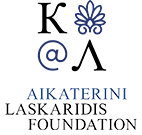Art and antiquities (4900 Subjects)
Midas monument at the village of Yazılıkaya, near Eski Sehir.
Boustrophedon inscription, recorded by William Gell, from the throne of a statue at the Sacred Way of Didyma, the road leading from the Temple of Apollo to the sea. Inscription from a helmet at Olympia, votive offering of the city of Syracuse. William Leake cites the latter inscription to show how in Doric inscripions vowel crasis is employed so that inscriptions can end in dactylic hexameter.
Plan of stadium and ancient theatre as they are found in Magnesia, Tralles, Sardes and Pergamon, indicating how in those cities the theatre is adjacent to the stadium.
The Troas from Rhoeteium and Alexandria to the summits of Mt. Ida.
Plan of the ancient theatre of Patara. Plan of the ancient theatre of Myra. Drawings by C.R. Cockerell.
An example of the plan of an ancient theatre of Europe (Greece, southern Italy). According to William Leake, the orchestra forms a semicircle parallel to the scene, in contrast to the theatres of Asia Minor, which possess a wider orchestra forming an arc of approximately 220º.
Plan of the orchestra of an ancient theatre according to Vitruvius' description.
Plan of the gymnasium and palaestra of Hierapolis, based on the drawings by Charles Robert Cockerell.
Plan and elevation of the temple of Artemis at Sardes, where there was probably a cult of Zeus, Cybele and other deities as well.
Comparison of plans of ancient temples as to their size: The temple of Artemis at Ephesus (1), the Heraion of Samos (2), the sanctuary of Apollo at Didyma (3), the temple of Artemis at Sardes (4), the temple of Artemis Leucophryene at Magnesia on the Maeander (5), the temple of Dionysus at Teos (6), the temple of Athena Polias at Priene (7), in Ionic order. The temples of Agrigento (1) and Selinunte (2) in Doric order, the temple of Olympian Zeus at Athens (Corinthian order) and the Parthenon (Doric order).
Composition of landscapes and monuments from Laborde's journey in Asia Minor.
Panoramic view of the gulf and city of Izmir from the remains of the temple of Hera.
Panoramic view of Iassos in Asia Minor.
View of the Roman aqueduct in Buca, Izmir (formerly also called Valley of Saint Anne).
The travellers' caravan halts at a rock-cut tomb in Gelenbe, Asia Minor.
Rock-cut tomb in Gelenbe, Asia Minor.
View of the bridge of Justinian or Sangarius Bridge. The bridge is situated on Sangarius (Sakarya) river, near Sabanca lake, outside Adapazari, on the route from Iznik to Izmit. Today the bed of Sangarius lies to the east of the bridge, which only covers the smaller tributary Sark Deresi river (anc. Melas). On the foreground, the now-lost triumphal arch at the western end of the bridge.
Elevation, sections, details and plan of the bridge of Justinian or Sangarius Bridge. The bridge is situated on Sangarius (Sakarya) river, near Sapanca lake, on the outskirts of Adapazari, on the route from Iznik to Izmit. Today the bed of Sangarius lies to the east of the bridge, which only covers the smaller tributary Sark Deresi river (anc. Melas). Amogn the drawings, the now-lost triumphal arch at the western end of the bridge.
The sarcophagus of Nicaea, on the outskirts of the city.
General view of Iznik (Nicaea).
Ancient reliefs which had been incorporated into the walls of Iznik.
The Sanctuary of Zeus in ancient Aizanoi near Çavdarhisar, Asia Minor, seen from the pronaos.
The opisthonaos (rear porch) of the Sanctuary of Zeus in ancient Aizanoi near Çavdarhisar, Asia Minor.
View of the Sanctuary of Zeus in ancient Aizanoi near Çavdarhisar, Asia Minor, from the west.
View of the Sanctuary of Zeus in ancient Aizanoi near Çavdarhisar, Asia Minor, from the south.
The ancient theatre of Aizanoi.
Map of Çavdarhisar and the archaeological site of Aizanoi.
One of the Roman bridges over Penkalas river in Çavdarhisar.
One of the Roman bridges over Penkalas river in Çavdarhisar.
One of the Roman bridges over Penkalas river in Çavdarhisar, Asia Minor, to the west of the city.































